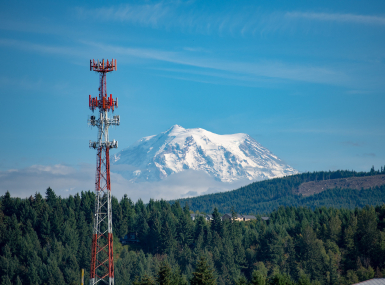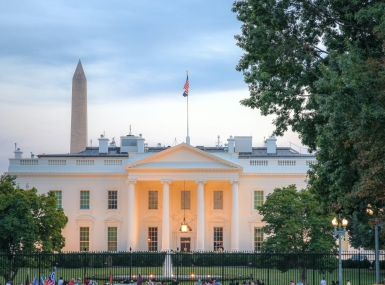BEAD Program announces state-allocations for Internet For All Initiative
Author

Seamus Dowdall
Upcoming Events
Related News

Key Takeaways
On Monday June 26, the White House and the National Telecommunications & Information Administration (NTIA) announced the state allocations that will be distributed via the Broadband Equity, Access, and Deployment (BEAD) program, a program that will provide funding for broadband deployment infrastructure to every unserved and underserved location across the nation. The state-allocations announcement marks a pivotal next step in the program, as states prepare to offer subgrantee opportunities under the BEAD program as early as 2024. Counties are eligible to receive the BEAD program’s subgrantee grant funding, and counties should consult with their state broadband office for further information on next steps.
You can view the allocations for all states and territories here.
Overview of the BEAD Program
The BEAD program was authorized and appropriated under the Bipartisan Infrastructure Law (BIL) to provide $42.45 billion in funding for the deployment of last-mile broadband connectivity to every unserved and underserved household and business across the country. Allocations for the BEAD program have been determined based on the number of unserved locations in a state relative to the rest of the county based on the updated National Broadband Map provided by the Federal Communications Commission (FCC), which was first released in November of 2022 and since updated into the latest version made available in June of 2023.
An unserved location, as defined by the BEAD program, constitutes a location that lacks access to an internet connection of 25 Megabits per second (Mbps) download and 3 Mbps upload. An underserved location constitutes a location that lacks access to an internet connection of 100 Mbps download and 20 Mbps upload. After funding for last-mile broadband infrastructure construction has served all unserved and underserved locations, any remaining funding can be used for eligible use of funds related to broadband access, adoption, and equity.
Outside of households and businesses, the NTIA also strongly encourages states and subgrantees to serve community anchor institutions (CAIs), which include a variety of entities (such as schools, hospitals, libraries, and more) that facilitate greater use of high-speed internet service by vulnerable populations and have download speeds that are less than 1 Gigabit per second (Gbps). for additional institutions which can or should qualify as an eligible CAI under the BEAD program.
With the announcement of the state allocations under the BEAD program, states are now charged with submitting their Initial Proposals to the NTIA. An Initial Proposal must be submitted within 180 days of the announcement of state-allocations, and once an Initial Proposal is submitted and approved by the NTIA, that state will receive 20 percent of their state’s total allocation. The state will then have an additional 365 days to submit a Final Proposal, which upon acceptance by the NTIA, will allow that state to access the remaining 80 percent of their state’s allocation.
Action Items for Counties
With the announcement of state-level allocations, counties can take several steps to engage with the BEAD program in advance of the opening of subgrantee opportunities.
- Develop data and engage in strategic planning for serving your unconnected residents to high-speed internet through collaboration with local internet service providers, conducting needs assessments and feasibility studies, and sharing this insight with your state broadband office
- Assess your county’s current and future needs with respect to local broadband availability, and infrastructure deployment challenges, while reviewing local regulations and permitting practices to ensure the county is fully prepared for streamlined infrastructure deployment
- Advocate for your county’s vulnerable community through targeted outreach and community convening events to prepare the community for the incoming investment and steward public dollars most appropriately
- Apply to be a subgrantee, which is encouraged by the BEAD program, and counties can apply for broadband funding directly or via a public-private partnership approach. Counties can also help fund a BEAD-funded program through local contributions to satisfy a non-Federal match or otherwise help contribute to the total cost of the project.
- Establish a strong relationship with your state broadband office to get involved in the planning process as they prepare to receive their BEAD allocation. You can find the contact information for your state broadband office here.
NACo will continue to monitor updates to the historic BEAD program and provide a regular stream of communications to counties on strategies for utilizing the BEAD program within their jurisdictions.
Attachments
Related News

House committee passes local broadband permitting preemption bills
The American Broadband Deployment Act of 2025 would enact new restrictions on a variety of state and local land use and zoning authorities pertaining to the deployment of telecommunications infrastructure.

White House signs Executive Order on state AI lawmaking
President Trump signed an Executive Order (EO) aimed at mobilizing federal agencies to challenge existing state laws on artificial intelligence.
